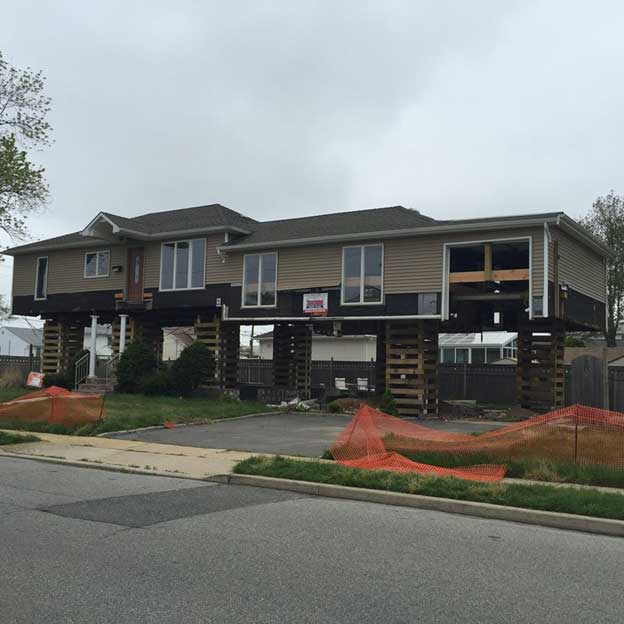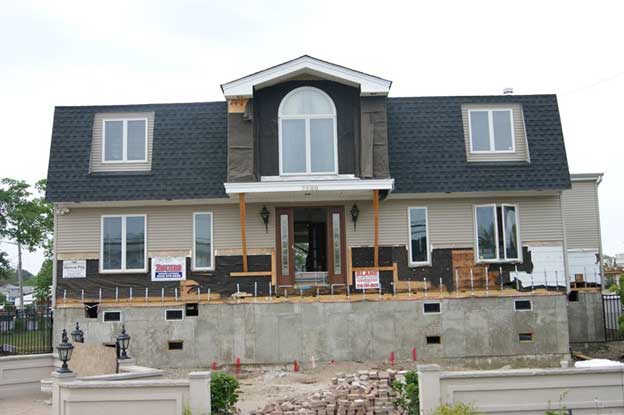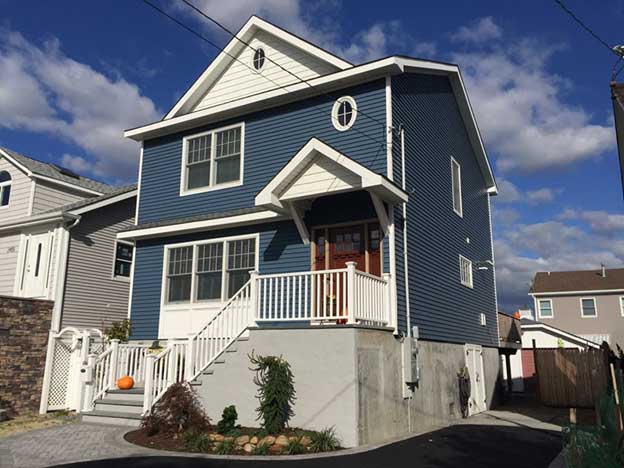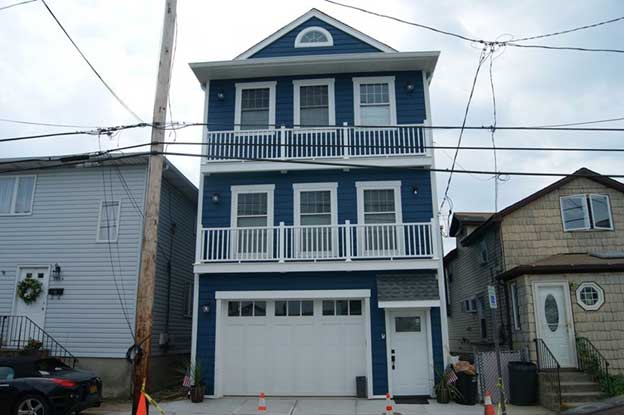In the aftermath of natural disasters, predominantly in shorefront communities, an effort to reinforce combustible (Type V) private dwellings is well underway. This isn’t a new design feature, however; since Hurricane Sandy in 2012, when shorefront private dwellings were ravaged and ultimately destroyed, the construction of podium wood frame homes has surged following federal and local guidelines to ensure homes in designated flood zones are adequately protected from floodwaters. (1)
This article will address hazards in certain coastal areas, but a look into this construction effort should be analyzed by all fire departments due to the possibility of inland firefighters being deployed to assist via mutual aid these locations. The construction of podium wood frame private dwellings changes traditional operations. These building use different materials and expose firefighters to different fire behavior modalities.

What characteristics can firefighters expect? When we discussed podium wood-frame multiple dwellings, we observed that the structures were elevated, earning from building construction educators the dubious moniker “toothpick towers.” These buildings were elevated by means of Fire Resistive (Type I) construction with ascending wood-frame occupancies above. This is the basic principle. Podium wood-frame private dwellings are raised with the use of reinforced concrete from four to 10 feet into the air. (2) This is accomplished by building the concrete podium and then constructing a new wood-frame private dwelling above. Otherwise, developers take a preexisting structure and raise it using heavy timber cribbing, constructing the concrete podium beneath it and then lowering the home onto its new elevated podium. The home is then renovated from there.
Picking Apart Toothpick Towers

The main difference between the podium wood-frame multiple dwelling and the private dwelling is how the occupant uses the space beneath the wood frame occupancy. In podium wood-frame private dwellings, the space within the concrete podium is used in three ways. The first is an open car port, where the podium is built as numerous columns and an open space exists for cars to park beneath. (3) The second method is called a flow through. This space is used specifically for flood waters to enter and flow beneath the structure from all sides. (4) This method typically is smaller in height (four to six feet) and resembles a crawlspace. Flood vents and hatch way doors are installed into the walls, which is the first clue to an uninhabited podium space. The final method is a fully enclosed podium space that serves as a storage/ utility space, or living space. () With this method we see a one- or two-car garage space with an enclosed combustible staircase to the second floor. Another application is a livable space.



What’s the risk? With podium wood-frame private dwellings, the second floor is often unprotected from beneath, which is the gravest concern. (6). Because these structures are often built with limited budgets and in haste, lightweight materials are almost exclusively used. Due to the very limited egress of these buildings, fire that originates on the lower floors can trap occupants on ascending floors. There is often a staircase that is in the front of the structure to one side. If fire originates in the podium space, access via interior stairs can be compromised early on. Another issue is that these structures are reaching excessive heights for wood-frame private dwellings. We are used to a one- or two-story wood-frame private dwelling originating at ground level. With podium wood-frame private dwellings, the wood frame begins from six to 10 feet, and we can often see three stories above. The second floor is usually the living room and kitchen space, and bedrooms are on the remaining floors. It is quite common to see balconies at the bedroom levels.

Other features include the installation of many hurricane-proof windows, which slow down the ability of companies to achieve horizontal ventilation. Keep this in mind when assessing how you can compromise these windows for rescue or ventilation. Because these structures are often in shorefront communities, we often see significant exposure problems (7) Homes can be built within two feet of one another and fire can extend to other structures very quickly if not addressed early on. The close proximity of these structures can also limit the ability of laddering the structure and getting to upper floors. (Keep in mind that your go-to 24ft ladder may not reach the upper floors.) Power lines are often dead smack in front of the private dwelling, because in these areas, underground electrical vaults are often not used due to the water tables. This may limit aerial access. It should also be noted that in some cases the streets are so tight that there is no available scrub area.

In many states, the addition of residential sprinkler systems comes with wood-frame private dwellings above two stories. We cannot control these systems other than to turn them on or off—there is no fire department connection or water motor gong. The heads are often recessed in living spaces and sidewall in the podium spaces. They are identified by their orange piping and the utility for the system is often in the podium space.
A building under construction is a building under demolition. Never enter a podium wood frame private dwelling that is under construction and is sitting atop cribbing. There is often missing floor decking, joists, and integral structural elements that can precipitate collapse. There are no occupants when this structure is being raised and no utilities.
Podium wood-frame private dwellings pose many different risks to firefighters due to their construction. We must evaluate the condition and type of floor joists, the location and extent of fire, and accessible egress locations. Exposure issues must be addressed early on to avoid losing entire blocks of homes. We must preplan access in the event that the interior staircase is compromised. Do not wait until there is a fire to check out one of these structures. Go out into the community and watch the renovation from start to finish. Discuss ways to overcome limited ventilation. Most importantly, identify the use of unprotected lightweight building materials.

SALVATORE ANCONA is a deputy chief fire instructor at the Nassau County (NY) Fire Service Academy; a member of the Seaford (NY) Fire Department; a former captain and training officer for the Bellmore (NY) Fire Department; and a paramedic supervisor in Queens, New York. He has an A.S. degree in fire science from Nassau Community College and has a bachelor’s degree in fire and emergency services administration from John Jay College of Criminal justice. Ancona is the author of the building construction page “The Sons of Brannigan” on Facebook and was a recipient of the 2019 FDIC International Honeywell DuPont Scholarship.
MORE
Veneer vs. Façade: What’s the Difference?
Attic vs. Cockloft: What’s the Difference?
Firefighters and Construction: Beams and Girders: How They Fail
Firefighters and Construction: Primer on Collapse in Noncombustible Buildings

